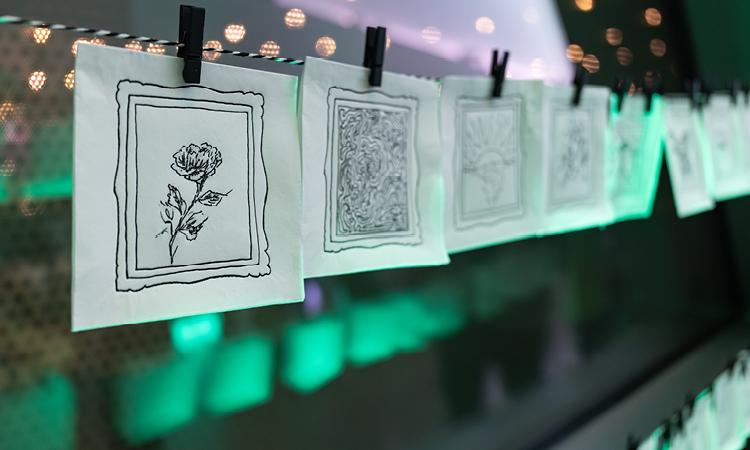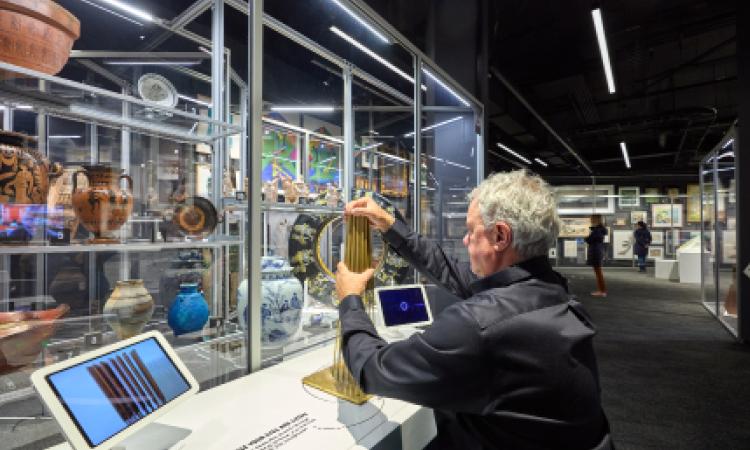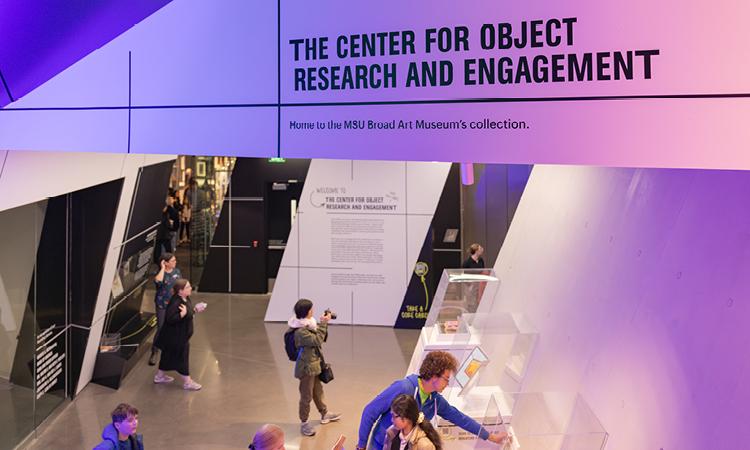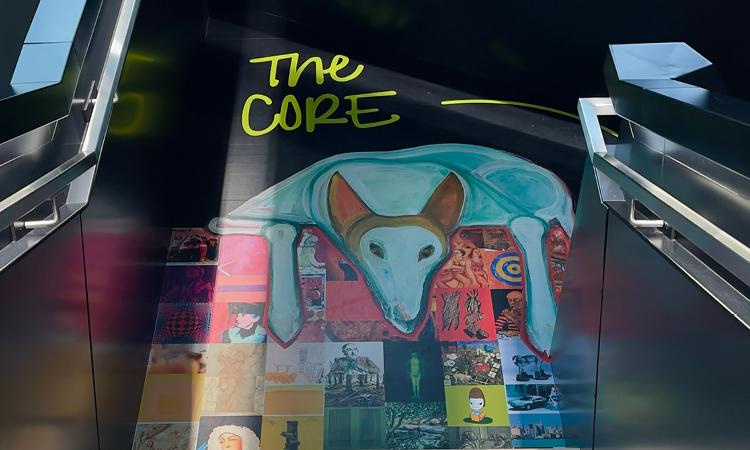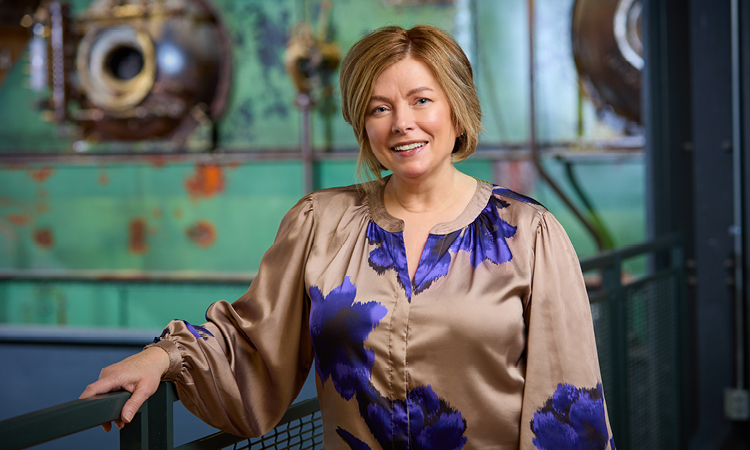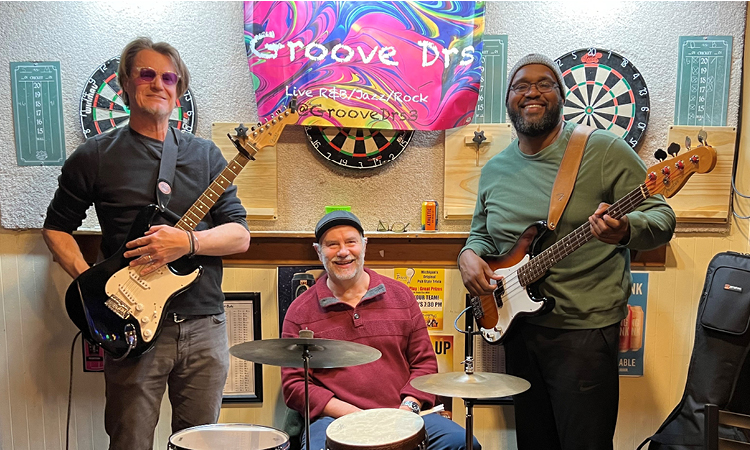The arts have a unique way of opening doors. To ourselves, to each other and to big ideas. And Spartans, whose university was termed “an experiment” by its first president, especially recognize the value of creative, daring work.
Seeing the arts—collaborative, connective and generative at their core—as essential to a vibrant, inclusive and globally minded community advancing the common good, Michigan State University leadership launched Arts MSU last fall, an earnest and far-reaching effort that has been in the works since 2019. This unified approach seeks to integrate the arts across MSU—in classrooms, in research, in outreach, in campus infrastructure and more.
“This fall marked a tremendous step forward for our efforts to embed the arts across MSU’s missions, driving the kind of experimentation and innovation that are foundational to who we are as a university,” said Judith Stoddart, vice provost for university arts and collections. “Arts MSU makes visible the ways in which this strategy catalyzes discoveries and experiences at the intersection of disciplines, ideas and perspectives.”
By tapping into the arts’ longstanding record as a powerful and positive force in the world, Arts MSU aims to promote creativity and stimulate collaboration. It looks to heighten curiosity, accelerate discovery, propel knowledge sharing and foster richer perspectives of the world. It wants Spartans to feel more expressive and empowered, inspired and involved.
Here, Spartans share stories of incorporating the arts into their daily lives in spirited, fulfilling ways and shepherding artistic exploration and activities on and beyond the MSU campus.
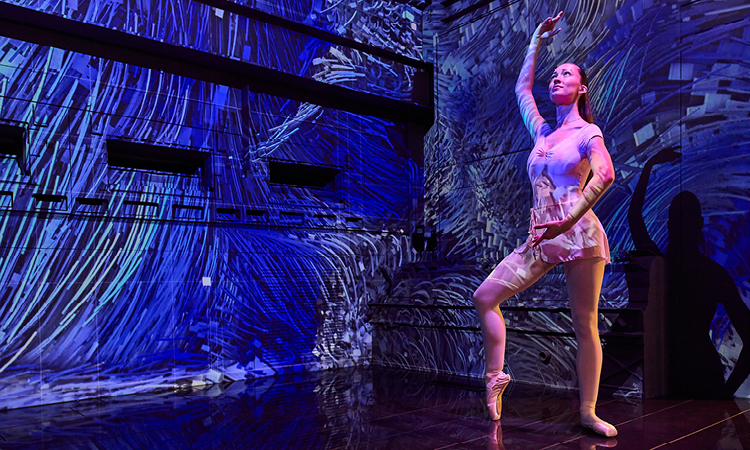
GRACE KRAJEWSKI “THE ARTS HELP MAKE ME MORE HUMAN”
A junior majoring in human biology, Grace Krajewski is also pursuing a minor in dance. It’s an admittedly unique academic balancing act connected to Krajewski’s past—she began toddler ballet classes in her hometown of Rochester Hills, Michigan, before embracing jazz, lyrical and other forms as a youth—and her future ambitions, namely medical school.
While the two disciplines excite her in different ways, each serving different personal objectives for Krajewski, she never expected them to intersect during her time at MSU. But they have—and in dynamic ways stimulating Krajewski’s mind, breeding unlikely relationships and deepening her sense of Spartan pride.
Krajewski recalls sitting in a physiology class one day learning about the organized composition of the human body. Later that same day, she listened to her contemporary dance teacher explain how the body moves in coordination.
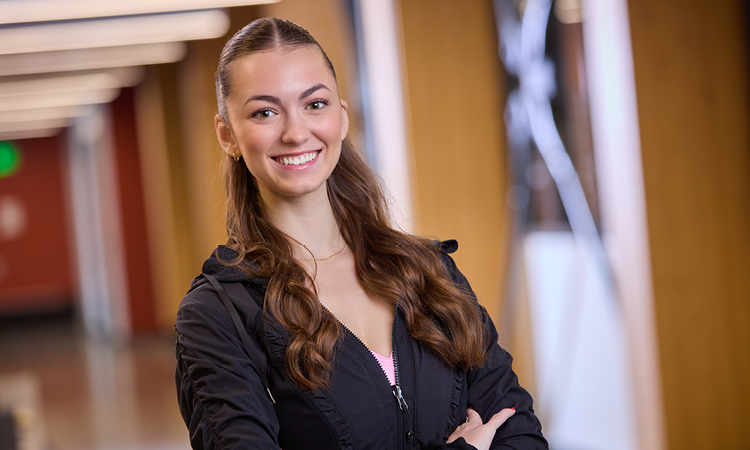
“Lightbulbs started going off for me,” Krajewski said. “These fields that seemed so disparate, so distinct, suddenly became related, which was amazing to understand. It began to change everything for me.”
But it was only the first step in a more mind-opening, soul-enriching journey.
In October 2022, Krajewski joined a motion capture research project led by Brad Willcuts, associate professor of musical theater, choreography and dance at MSU’s College of Arts & Letters. Given her dance background, Krajewski was tabbed to don a motion capture suit and perform a series of movements. While the motion capture work informed Willcuts’ 3D body mapping project, it also provided Krajewski a deeper understanding of the body’s interconnectedness—how muscles, joints and limbs move independently, in unison and because of one another.
Krajewski said the ability to study the human body and dance in parallel has allowed her to exercise both sides of her brain, awakened a richer understanding of the body and enlivened her experience at MSU. Above all, though, it’s helped her become a more well-rounded, approachable individual who recognizes the importance of cultivating relationships and introspection as a routine habit.
“I have no question the arts help make me more human, which is why I’m so grateful I have them in my life,” Krajewski said.
RUTH NICOLE BROWN “THE ARTS ARE A BRIDGE ENABLING US TO SPEAK TO ONE ANOTHER BEYOND OUR EXPERTISE”
Ask Ruth Nicole Brown about Arts MSU and she offers an enthusiastic reply.
The chair of the Department of African American and African Studies (AAAS) housed within MSU’s College of Arts & Letters, Brown appreciates the universitywide initiative and, specifically, its commitment to bringing the arts into more direct contact with the social sciences and STEM fields.
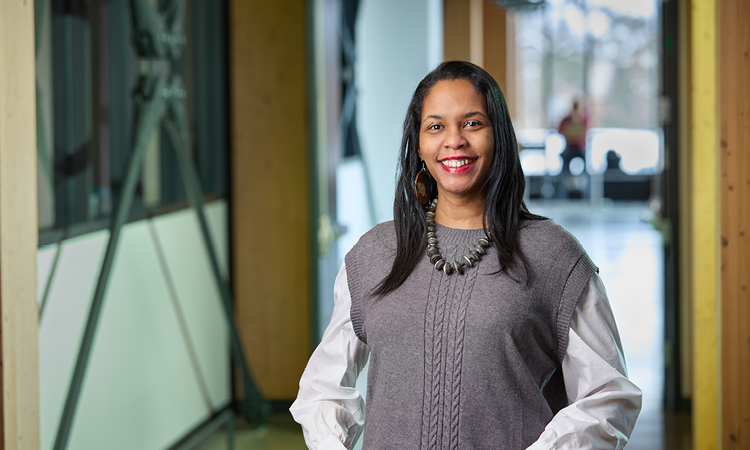
“The deepest thinker in physics often has a lot in common with the deepest thinker in AAAS, and the arts are often a bridge enabling us to speak to one another beyond our technical expertise,” Brown said.
The arts feature prominently in AAAS’s curriculum. Faculty regularly task students to leverage artistic practices like performance, poetry, painting, mixed media design and dance, while an assignment like sonic introductions challenges students to introduce themselves to classmates by integrating sound and music.
Meanwhile, AAAS faculty are artist-scholars themselves, including Brown, who engages in theatre, poetry and music. Their artistic creativity and intellectual curiosities are integrated, foundational to how they lead and transgressive.
“The arts are present in how we interact with one another, and we not only plan to continue advancing and amplifying the arts and humanities, but we also aspire to combine our creative forces as one way to showcase the irresistibility of the chorus,” Brown said.
To that end, Brown is working to build artistic spaces within her department. This spring, AAAS will debut a recording studio to jump-start creative expression and collaborative ventures among AAAS faculty, students and staff as well as music makers across MSU and the greater Lansing community.
“The studio will be a place to build community, create culture, play together, share information and advance knowledge, all things the arts and humanities do so beautifully well,” Brown said.
Brown calls the arts a necessary component of “an excellent 21st century education” and a valuable avenue to address problems and nourish ideas. As many students come to MSU curious and eager to make a difference in the world, Brown said active involvement with the arts can feed both objectives.
“We’re living in a time in which people are leaning on the arts and humanities to express themselves, to dream new worlds and say some things differently,” Brown said. “We’re wise to support them in their journeys.”
STEVEN BRIDGES “ARTS ARE CRITICAL TO DEVELOPING THE WHOLE PERSON”
The Eli and Edythe Broad Art Museum at Michigan State University (MSU Broad Art Museum) emphasizes object-based learning, an educational approach that encourages close examination of artworks, using them as a tool to think critically about the world.

According to Steven Bridges, the museum’s interim director, senior curator and director of curatorial affairs, that educational emphasis is intentional, grounded in the belief that direct engagement with the museum’s objects—over 10,000 works spanning histories, geographies and cultures—fosters meaningful dialogue, an openness to diverse viewpoints and a greater understanding of the world.
“Ultimately, art is about breaking down silos and synthesizing information, which sits at the heart of learning, teaching and education,” Bridges said.
That philosophy, in fact, has pushed the MSU Broad Art Museum to partner on innovative programs like Global DEI Through Art. Using the museum’s collection as a gateway to cultural discovery, the annual teacher fellowship program equips Michigan-based K-12 educators with skills and strategies to broaden students’ understandings of global diversity, equity and inclusion in the classroom.
The museum’s newly opened Center for Object Research and Engagement (The CORE), however, might be the greatest testament to this educational approach.
Filling more than 4,500 square feet of renovated space on the museum’s lower level, The CORE places nearly 300 works of art from the museum’s permanent collection on view, elevating access and visibility of a collection covering 5,000 years of art history. With purpose and enthusiasm, The CORE highlights diverse stories, values and worldviews. It stimulates curiosity. It uplifts scholarship and motivates fresh perspectives. And it exemplifies the spirit and mission of Arts MSU—driving experiences with the arts truly unique to the Michigan State campus.
